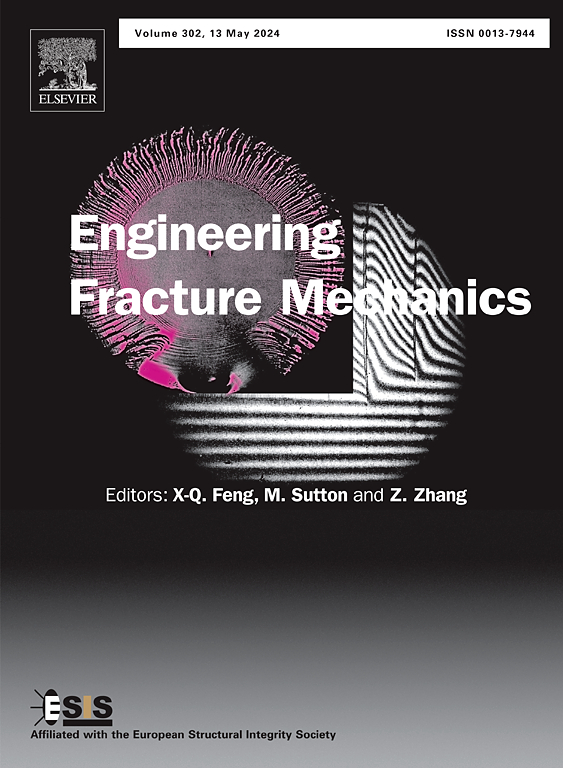Self-affine roughness and spatial-temporal correlation of shear-induced micro-fractures in rough DEM rock joints
IF 4.7
2区 工程技术
Q1 MECHANICS
引用次数: 0
Abstract
We investigate the spatial and temporal correlations of micro-fractures generated during shear simulations of rough rock joints using the Discrete Element Method (DEM). Eight numerical joints were meticulously designed, characterized by distinct self-affine roughness parameters: the Hurst exponent , self-affine correlation length , and variance of heights . Shearing was conducted under quasi-static conditions, maintaining constant normal load (CNL) and constant shear speed. The DEM model underwent calibration to faithfully replicate the mechanical behavior observed in experimental compression, tension and shear tests on synthetic rock. Remarkably, our results unveil a power-law behavior in both spatial and temporal dimensions. The probability distribution describing the separation distance between two fractures follows a power-law relationship: , where the exponent ranges between 0.4 and 0.8, displaying a marked sensitivity to joint roughness. Additionally, the probability of two fractures occurring within a time interval during shearing also conforms to a power-law distribution: . For mechanically interacting micro-fractures, ranges from 0.716 to 0.869, while for micro-fractures generated across the entire joint area (not necessarily interacting fractures), takes values between 1.458 and 1.895. Notably, these findings underscore a remarkable analogy with the Omori law in seismic activity.
求助全文
约1分钟内获得全文
求助全文
来源期刊
CiteScore
8.70
自引率
13.00%
发文量
606
审稿时长
74 days
期刊介绍:
EFM covers a broad range of topics in fracture mechanics to be of interest and use to both researchers and practitioners. Contributions are welcome which address the fracture behavior of conventional engineering material systems as well as newly emerging material systems. Contributions on developments in the areas of mechanics and materials science strongly related to fracture mechanics are also welcome. Papers on fatigue are welcome if they treat the fatigue process using the methods of fracture mechanics.

 求助内容:
求助内容: 应助结果提醒方式:
应助结果提醒方式:


